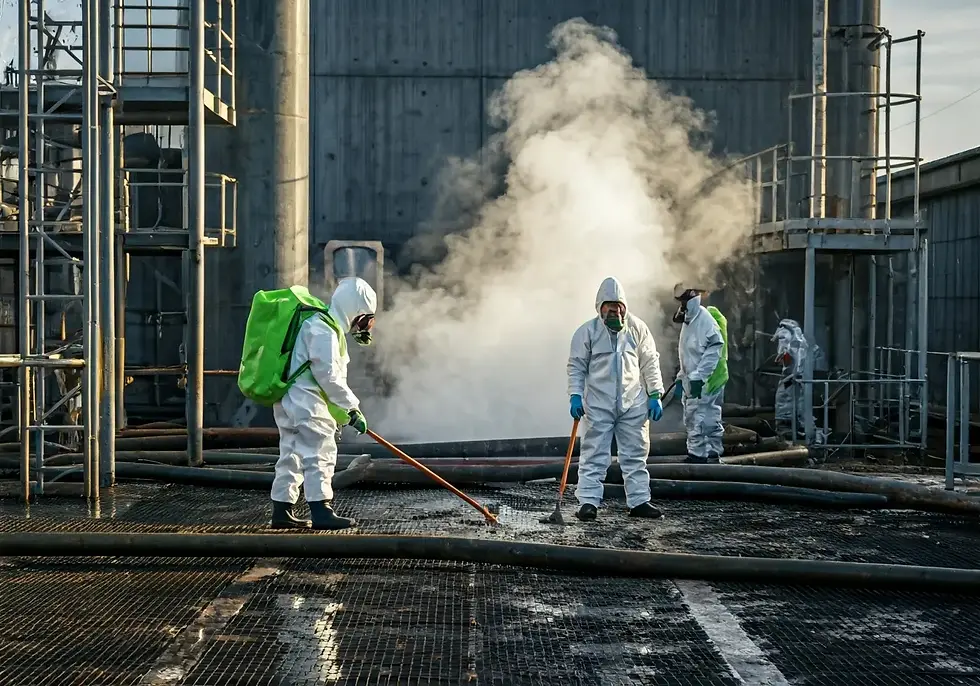What Should You Know About the Water Damage Restoration Process?
- Hench Ludwig
- 6 days ago
- 3 min read
Water damage can be an overwhelming situation for any homeowner. Understanding what to do and what to expect during the restoration process can ease some of the stress and help you act effectively. In this guide, we'll walk you through the essential steps of the water damage restoration process.

Identify the Source of Water Damage
The first step in addressing water damage is to identify and stop the source. Whether it's a burst pipe, leaking roof, or natural disaster, knowing the source can help you take appropriate actions.
When you identify the source, you're better prepared to mitigate further damage. If it's a plumbing issue, for example, you'll want to turn off the water supply immediately. In the case of natural disasters, contacting local authorities can provide guidance on how to proceed safely in these situations.
It's also worth investigating why the damage occurred in the first place. This can help prevent future incidents. Consider the age of your home's infrastructure, maintenance history, and even local weather patterns, as they all play a crucial role in understanding and effectively managing water damage.
Assess the Extent of the Damage
Once the source is contained, assess how much damage has occurred. Check for visible signs of water damage, including wet walls, ceilings, and floors, as well as hidden damp areas.
It’s important to evaluate both the visible and hidden damage to get a full understanding of the situation. Tools like moisture meters can help detect issues not immediately obvious to the eye, ensuring nothing is overlooked and allowing for a comprehensive restoration plan.
Take detailed notes and photos for insurance purposes. Documentation can be crucial in accurately claiming damages. Be thorough in your assessment, as the extent of the damage will determine the steps needed and potentially speed up the insurance claims process.
Remove the Water
The next crucial step is water removal. Using pumps, wet/dry vacuums, and dehumidifiers can help effectively remove standing water and moisture from the affected areas.
Quick action is essential in this stage. The longer water sits, the more likely it is to cause further damage, such as structural issues or mold growth. Consider hiring professionals with industrial-grade equipment for extensive flooding situations, as they can more effectively remove the water and moisture.
In minor cases, where professional help isn't immediately available, household equipment such as mops and towels can help manage the situation temporarily until stronger resources can be deployed.
Dry and Dehumidify Affected Areas
After removing the water, it's important to thoroughly dry your home. Proper ventilation and the use of industrial fans and dehumidifiers expedite the drying process and prevent mold growth.
Achieving a dry environment is vital in helping prevent further issues. Consider removing damaged furnishings and belongings to dry separately, which can facilitate faster dehumidification of the interior spaces.
The process might take several days or more, depending on the extent of the damage. Continually monitor the moisture levels to ensure effective drying, and remain vigilant for signs of mold, which might require additional attention.
Clean and Sanitize
Cleaning and sanitizing your home removes contaminants carried by the water. Use appropriate cleaning solutions to ensure surfaces and possessions are disinfected and safe.
Consider special cleaning agents that target bacteria and mold. Items such as carpets, rugs, and upholstery may require professional cleaning to effectively eliminate all pathogens and restore them to a clean state.
Every affected corner of the home must be addressed. Don't overlook components like HVAC systems which, if left unclean, can become a haven for mold and spores, potentially spreading them throughout the home during regular operation.
Complete the Restoration
Finally, repair and restore your home to its original condition. This can involve replacing drywall, flooring, and other damaged structural components, ensuring your home is safe and sound.
It’s not merely about repairs; consider improvement opportunities during restoration. For instance, upgrade materials to more water-resistant options, or enhance drainage systems to better prepare for potential future water events.
Elaborate work such as electrical, plumbing, or large-scale construction should always be left to professionals to ensure not only compliance but also the safety and longevity of your home's systems. Thorough restoration transforms what could have been a devastating situation into an opportunity for revitalizing and strengthening your home.
In Conclusion: Knowledge is Key
Being prepared and informed about the water damage restoration process can significantly reduce the stress and potential damage to your home. By acting quickly and understanding each step, you ensure a thorough and successful restoration, helping your home return to its normal state.





Comments